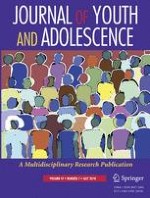13-02-2018 | Empirical Research
A Developmental Perspective on Young Adult Romantic Relationships: Examining Family and Individual Factors in Adolescence
Gepubliceerd in: Journal of Youth and Adolescence | Uitgave 7/2018
Log in om toegang te krijgenAbstract
The ability to develop and maintain healthy romantic relationships is a key developmental task in young adulthood. The present study investigated how adolescent interpersonal skills (assertiveness, positive engagement) and family processes (family climate, parenting practices) influence the development of young adult romantic relationship functioning. We evaluated cross-lag structural equation models with a sample of 974 early adolescents living in rural and semi-rural communities in Pennsylvania and Iowa, starting in sixth grade (mean age = 12.4, 62.1% female) and followed into young adulthood (mean age = 19.5). Findings revealed that adolescents who had experienced a more positive family climate and more competent parenting reported more effective problem-solving skills and less violent behavior in their young adult romantic relationships. Adolescent assertiveness was consistently positively associated with relationship problem-solving skills, and adolescents’ positive engagement with their family was associated with feeling more love in young adult romantic relationships. In addition, family functioning and adolescent interpersonal skills exhibited some reciprocal relations over the adolescent years. In summary, family processes and interpersonal skills are mutually influenced by each other across adolescence, and both have unique predictive implications to specific facets of young adult romantic relationship functioning.
